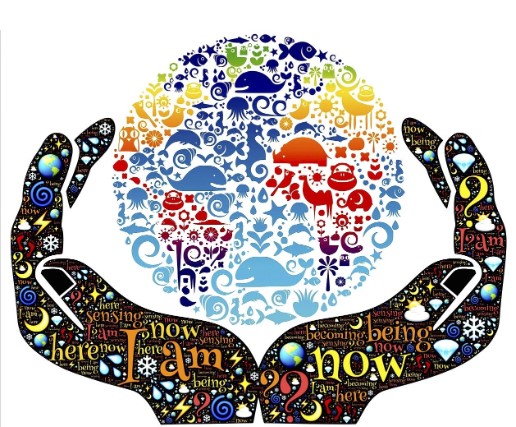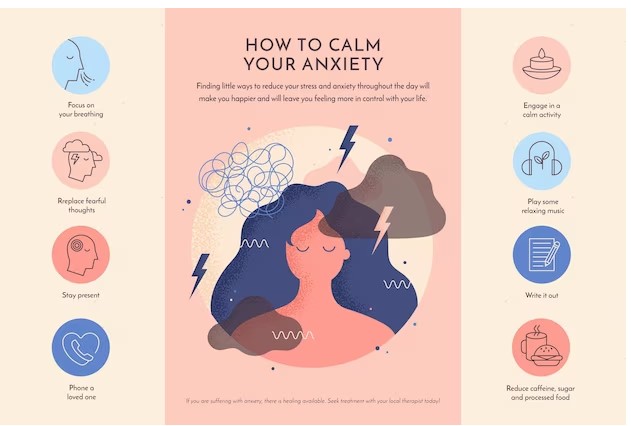What Is technology for Mindfulness
In today’s fast-paced and digital world, finding moments of calm and mindfulness can be a challenge. Fortunately, technology is not just about screens and distractions; it can also serve as a powerful tool for cultivating mindfulness and promoting well-being. In this article, we will explore the concept of “What Is technology for Mindfulness” and how it can help us achieve a sense of calm and balance in our daily lives.
The Role of Technology in Mindfulness
Technology has become an integral part of our lives, and it’s no surprise that it has made its way into the world of mindfulness. While some may argue that technology and mindfulness are at odds with each other, there is a growing movement that recognizes the potential benefits technology can bring to our mindfulness practices.
One of the key roles technology plays in mindfulness is making it more accessible to a wider audience. Traditionally, mindfulness practices have been associated with meditation retreats and in-person classes, making it challenging for many to incorporate mindfulness into their busy schedules. However, with the rise of smartphones and apps, anyone with a mobile device can now access guided meditations, breathing exercises, and other mindfulness tools from the comfort of their own home or even on the go.
Additionally, technology has the power to enhance our mindfulness experiences by providing a variety of tools and resources. From mindfulness apps that track our progress and provide reminders to stay present, to wearable devices that monitor our heart rate and stress levels, technology can help us gain deeper insights into our own well-being and provide valuable feedback on our mindfulness practices.
Benefits of Technology for Mindfulness
The benefits of technology for mindfulness are numerous and far-reaching. One of the key advantages is the convenience and accessibility it offers. With mindfulness apps and tools readily available on our smartphones, we can practice mindfulness whenever and wherever we choose. This flexibility allows us to integrate mindfulness into our daily routines, making it more sustainable in the long run.
Furthermore, technology can help us overcome common barriers to mindfulness practice. For example, many people struggle with maintaining a consistent practice or finding the motivation to meditate regularly. Mindfulness apps often offer features like reminders, progress tracking, and rewards, which can help us establish a regular practice and stay motivated along the way.
Technology also provides us with a wealth of resources to support our mindfulness journey. From guided meditations led by experienced teachers to informative articles and videos on mindfulness techniques, technology allows us to access a vast array of knowledge and guidance at our fingertips. This not only helps us deepen our understanding of mindfulness but also provides inspiration and new ideas to enhance our practice.
Popular Mindfulness Apps and Tools
In recent years, the market for mindfulness apps and tools has exploded, offering a wide range of options to suit different needs and preferences. Here are some of the most popular mindfulness apps and tools available today:
- Headspace: This well-known app offers guided meditations, sleep sounds, and mindfulness exercises designed to reduce stress and promote well-being. With its user-friendly interface and structured programs, Headspace is a great choice for beginners looking to establish a regular mindfulness practice.
- Calm: Calm is another popular app that provides guided meditations, sleep stories, and relaxing music to help users unwind and find peace. It offers a variety of meditation programs tailored to specific goals, such as stress reduction, better sleep, and improved focus.
- Insight Timer: With a vast library of guided meditations and talks from renowned teachers around the world, Insight Timer is a favorite among mindfulness practitioners. It also offers a timer feature for self-guided meditation sessions and a community aspect that allows users to connect with like-minded individuals.
- Muse: Muse is a unique wearable device that uses EEG technology to provide real-time feedback on your meditation practice. By measuring your brain activity and giving you auditory feedback, Muse helps you stay focused and alert during meditation.
- Virtual Reality (VR) and Augmented Reality (AR) Experiences: With advancements in VR and AR technology, we now have the ability to immerse ourselves in serene environments and engage in virtual mindfulness experiences. From virtual nature walks to guided meditations in virtual temples, these experiences can help us find tranquility and deepen our mindfulness practice.
How Technology Can Enhance Mindfulness Practices
Technology has the potential to enhance our mindfulness practices in various ways. Here are some ways technology can be used to deepen our mindfulness experiences:
- Guided Meditations: Mindfulness apps offer a wide range of guided meditations led by experienced teachers. These guided sessions can help beginners learn the basics of mindfulness and provide experienced practitioners with new insights and techniques.
- Mindfulness Reminders: Many apps and devices allow us to set reminders throughout the day to bring our attention back to the present moment. These reminders serve as gentle nudges to practice mindfulness and can be particularly helpful in cultivating a mindful attitude in our daily lives.
- Biometric Tracking: Wearable devices equipped with sensors can monitor our heart rate, stress levels, and even brain activity. By providing real-time feedback, these devices help us understand how our body and mind respond to different situations, allowing us to make more informed choices and adjustments to our mindfulness practices.
- Mindful Breathing Exercises: Breathing exercises are a fundamental aspect of mindfulness practice. Apps and devices can guide us through various breathing techniques, helping us develop a deeper connection with our breath and use it as an anchor for present-moment awareness.
- Mindful Movement: Technology can also assist us in incorporating mindful movement into our routines. From yoga apps that provide guided yoga sessions to devices that track our movement and posture, technology can support our physical well-being and help us cultivate a mindful body.
Tips for Using Technology Mindfully
While technology can be a valuable tool for mindfulness, it’s important to approach it with intention and mindfulness itself. Here are some tips for using technology mindfully:
- Set Boundaries: Establish boundaries around your technology use to prevent it from becoming a source of distraction or overwhelm. Designate specific times for mindfulness practice and make a conscious effort to disconnect from technology during those times.
- Choose Quality Apps and Tools: With the abundance of mindfulness apps and tools available, it’s important to choose those that align with your goals and values. Look for reputable apps with positive user reviews and evidence-based content.
- Practice Non-Judgment: Be mindful of any judgments or comparisons that may arise while using technology for mindfulness. Remember that mindfulness is a personal journey, and it’s important to approach it with an open and non-judgmental mindset.
- Take Breaks: Just as with any activity, it’s important to take breaks from technology. Allow yourself moments of silence and stillness without relying on apps or devices. This can help you cultivate a deeper sense of presence and connection with yourself and the world around you.
- Seek Balance: While technology can enhance our mindfulness practices, it’s important not to become overly reliant on it. Strive for a balance between technology-assisted mindfulness and traditional mindfulness practices that require no external tools.
Challenges and Criticisms of Technology for Mindfulness
Despite the many benefits, technology for mindfulness is not without its challenges and criticisms. Some common concerns include:
- Potential for Distraction: With technology comes the risk of becoming more distracted and disconnected from the present moment. It’s important to use technology mindfully and create boundaries to prevent it from becoming a source of distraction rather than a tool for mindfulness.
- Lack of Human Connection: Mindfulness is often associated with human connection and the guidance of experienced teachers. While technology can provide valuable resources, it cannot fully replace the benefits of in-person interactions and personalized guidance.
- Reliance on External Tools: There is a concern that relying too heavily on technology for mindfulness may hinder our ability to cultivate mindfulness without external support. It’s important to strike a balance between technology-assisted mindfulness and developing self-reliance in our practice.
- Privacy and Data Security: Many mindfulness apps and wearable devices collect personal data, such as heart rate and stress levels. It’s important to be mindful of privacy and data security when using technology for mindfulness, and choose apps and tools from reputable sources.
Research and Studies on Technology for Mindfulness
The growing interest in technology for mindfulness has sparked numerous research studies exploring its effectiveness and benefits. Some studies have shown positive outcomes, such as reduced stress, improved emotional well-being, and increased mindfulness skills among participants using mindfulness apps and wearable devices.
However, it’s important to note that research in this field is still relatively new, and more studies are needed to fully understand the impact of technology on mindfulness. Additionally, the quality and rigor of research studies vary, so it’s important to critically evaluate the findings and consider multiple sources of evidence.
Integrating Technology and Mindfulness in Daily Life
As we navigate the digital age, finding ways to integrate technology and mindfulness in our daily lives becomes increasingly important. Here are some practical tips for incorporating technology mindfully:
- Create a Tech-Free Zone: Designate a specific area in your home or workplace where technology is not allowed. This space can serve as a sanctuary for mindfulness practice and allow you to disconnect from the digital world.
- Use Technology with Intention: Before using a mindfulness app or tool, take a moment to set an intention for your practice. Reflect on why you’re using technology and how it can support your mindfulness goals.
- Practice Mindful Device Usage: Be mindful of how you use your devices throughout the day. Take breaks from screens, practice digital detoxes, and be intentional about the apps and notifications you allow into your digital space.
- Balance Digital and Analog: While technology can be helpful, don’t forget about the power of analog tools for mindfulness. Incorporate activities like journaling, reading physical books, and spending time in nature to complement your digital mindfulness practices.
Conclusion: The Future of Technology for Mindfulness
Technology for mindfulness is a rapidly evolving field, and its future holds great potential. As technology continues to advance, we can expect to see more innovative apps, devices, and experiences that deepen our mindfulness practice and promote well-being.
However, it’s important to approach technology for mindfulness with a discerning and mindful mindset. While it can offer valuable support and resources, it’s ultimately our own presence and intention that cultivate true mindfulness.
By embracing technology mindfully, we can harness its power to create moments of calm, balance, and connection in our fast-paced digital lives. Whether it’s through guided meditations, biometric tracking, or virtual reality experiences, technology can become a powerful ally in our journey towards greater mindfulness and well-being. So let’s embrace the possibilities and explore the world of technology for mindfulness together.






